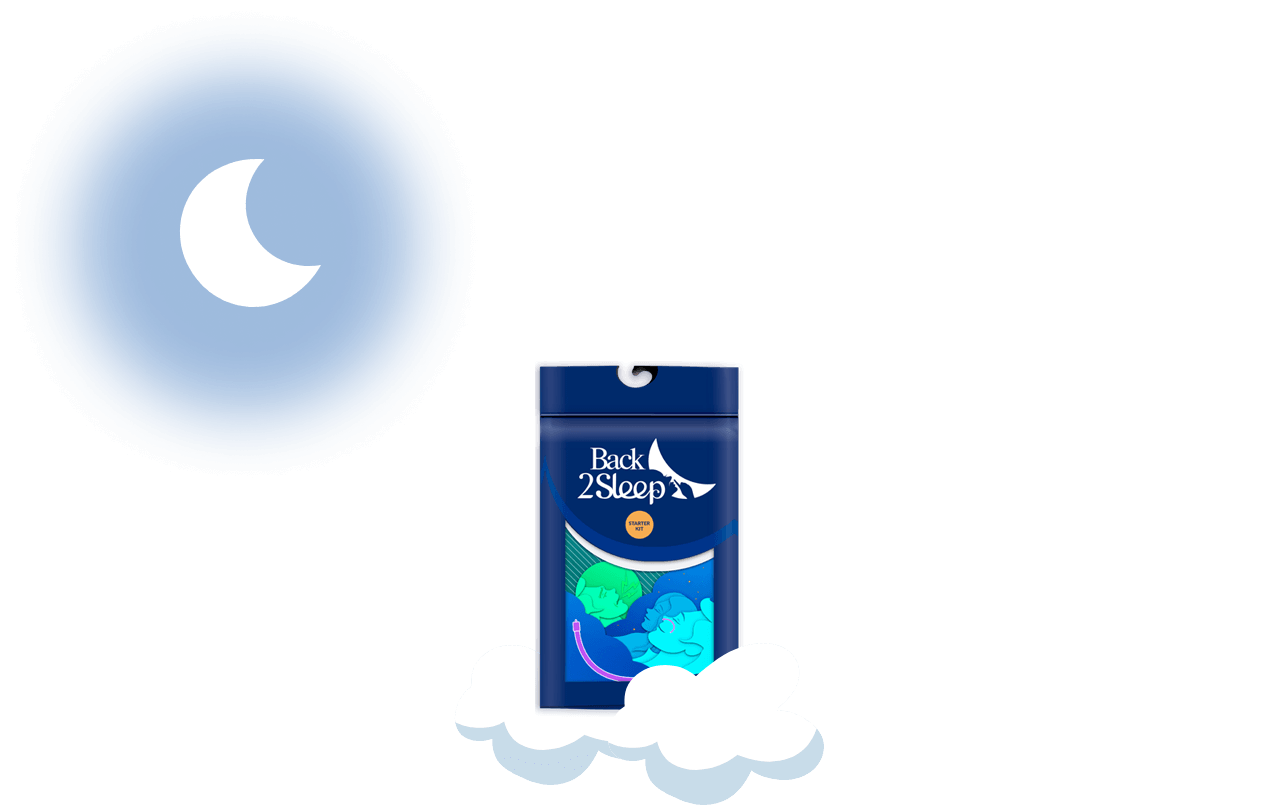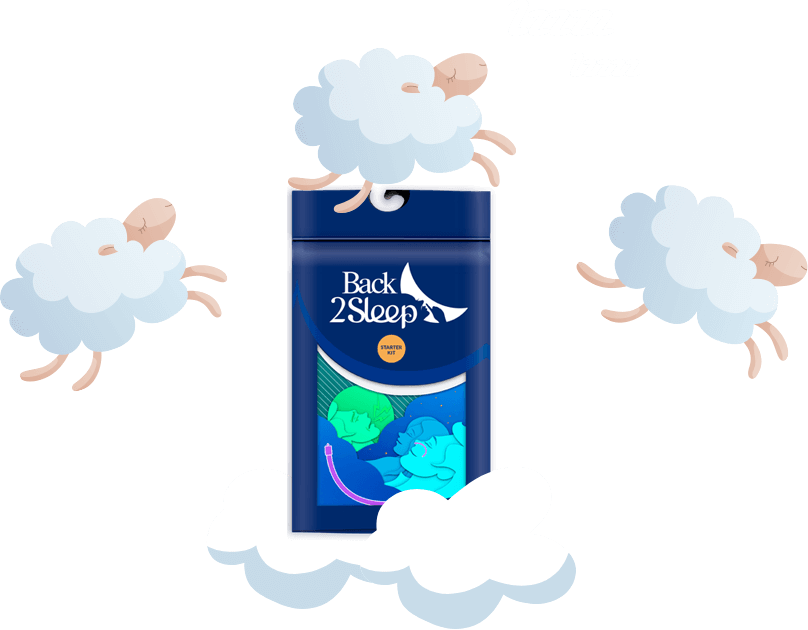The 4 Types of Sleep Apnea: Complete Guide to Diagnosis, Symptoms & Treatment
Understanding obstructive, central, mixed, and obesity hypoventilation syndrome to get the right treatment and reclaim restorative sleep
Sleep apnea affects over 30 million Americans, yet only 6 million have received proper diagnosis and treatment. This life-threatening sleep disorder causes repeated breathing interruptions throughout the night, robbing you of oxygen and fragmenting your sleep architecture. Whether you experience loud snoring, wake gasping for air, or suffer unexplained daytime fatigue, understanding the four distinct types of sleep apnea is critical for accurate diagnosis and effective treatment. From obstructive sleep apnea (OSA) caused by physical airway blockage to central sleep apnea (CSA) stemming from brain signaling issues, each type requires a tailored therapeutic approach to prevent serious cardiovascular complications and restore quality sleep.

Critical Health Alert: Untreated sleep apnea increases your risk of stroke by 140%, heart attack by 30%, and sudden cardiac death during sleep. Early diagnosis saves lives.
Sleep Apnea By The Numbers: The Hidden Epidemic
Research reveals that one in four adults between ages 30-70 experiences sleep-disordered breathing, yet the vast majority remain unaware. This underdiagnosis creates a silent public health crisis, with patients suffering preventable cardiovascular damage, metabolic dysfunction, and drastically reduced quality of life for years before receiving proper care.
What Are the 4 Types of Sleep Apnea? A Complete Breakdown
Sleep apnea isn't a single condition but rather a family of related disorders, each with distinct underlying mechanisms, symptoms, and treatment protocols. Understanding which type you have is essential for effective management and preventing long-term health complications.
🫁 Obstructive Sleep Apnea (OSA)
The most common form (84% of cases), caused by physical airway collapse when throat muscles relax during sleep, blocking airflow despite continued breathing effort.
🧠 Central Sleep Apnea (CSA)
Rare (0.4% of cases), results from brain signaling failure where the respiratory control center doesn't send proper commands to breathing muscles.
🔄 Mixed/Complex Sleep Apnea
Combination syndrome (15% of cases) exhibiting both obstructive and central patterns, often emerging during CPAP treatment for OSA.
⚖️ Obesity Hypoventilation Syndrome
Affects 20-30% of OSA patients, characterized by excess weight causing shallow breathing and dangerous CO2 buildup in blood.
Important Discovery: Recent studies show that 15% of patients diagnosed with OSA actually have complex sleep apnea syndrome, requiring different treatment approaches than standard CPAP therapy.
Type 1: Obstructive Sleep Apnea (OSA) - The Physical Blockage
Obstructive Sleep Apnea represents the overwhelming majority of sleep-disordered breathing cases, affecting millions worldwide. This mechanical problem occurs when soft tissues in your throat—including the tongue, soft palate, and uvula—collapse backward during sleep, creating a physical obstruction that prevents air from reaching your lungs.

How OSA Develops: The Mechanical Cascade
During normal sleep, muscle tone decreases throughout your body, including in your upper airway. In individuals with OSA, this natural relaxation becomes problematic. The airway becomes narrowed or completely blocked, creating a vacuum effect as you attempt to breathe. Your body desperately tries to inhale, but air cannot pass through the obstruction.
As oxygen levels drop and carbon dioxide accumulates, your brain triggers a partial arousal—just enough to restore muscle tone and reopen the airway. You gasp, snort, or choke as breathing resumes, then immediately fall back asleep, often with no memory of the event. This cycle repeats 5 to 100+ times per hour throughout the night.
Risk Factors and Causes
Recognizing OSA Symptoms
Most people with OSA don't realize they have it—the condition is typically discovered by bed partners who witness the frightening pattern of snoring, silence, and gasping. Key indicators include:
Nighttime symptoms: Loud, chronic snoring punctuated by pauses; witnessed breathing cessation; choking or gasping episodes; frequent nighttime urination (nocturia); restless, fragmented sleep; night sweats.
Daytime symptoms: Excessive sleepiness despite adequate time in bed; morning headaches (from CO2 buildup); dry mouth or sore throat upon waking; difficulty concentrating; memory problems; irritability and mood changes; decreased libido.
Important Note: Not everyone who snores has sleep apnea, and not everyone with sleep apnea snores loudly. Some individuals, particularly women, may have subtle or "silent" OSA that goes undetected for years.
Type 2: Central Sleep Apnea (CSA) - When Your Brain Fails to Signal
Central Sleep Apnea is fundamentally different from its obstructive cousin. In CSA, your airway remains open and unobstructed, but your brain temporarily fails to send signals to your respiratory muscles. It's as if your body simply "forgets" to breathe during sleep.
The Neurological Disconnect
Breathing is controlled by your brainstem, which continuously monitors blood oxygen and carbon dioxide levels, automatically adjusting your respiratory rate. In CSA, this control system malfunctions. The respiratory drive diminishes or disappears, causing breathing to pause or become dangerously shallow without any physical obstruction.
Cheyne-Stokes Breathing Pattern
A distinctive form of CSA called Cheyne-Stokes breathing creates a cyclical pattern: breathing gradually increases in depth and frequency (hyperventilation), then decreases until it stops completely (apnea), then the cycle repeats. This pattern is particularly common in individuals with heart failure or who have suffered strokes.
Causes and Risk Factors
Symptoms Unique to CSA
While CSA shares some symptoms with OSA (daytime sleepiness, fragmented sleep), key differences help distinguish between them:
Less pronounced snoring compared to OSA—when present, it's typically quieter and less chronic. More awareness of breathing pauses—CSA patients often remember waking up short of breath. Insomnia and difficulty staying asleep rather than just excessive sleepiness. More subtle presentation overall, making diagnosis more challenging.
Medical Insight: CSA is significantly underdiagnosed because its symptoms are less dramatic than OSA. Many patients are misdiagnosed with insomnia or other sleep disorders before the true cause is identified.
Type 3: Mixed/Complex Sleep Apnea Syndrome - The Hybrid Disorder
Complex Sleep Apnea Syndrome (CompSAS) represents the intersection of obstructive and central apneas, creating a challenging diagnostic and therapeutic scenario. This hybrid condition affects approximately 15% of patients initially diagnosed with OSA.

How Complex Sleep Apnea Develops
Mixed apnea events typically begin as central respiratory pauses (brain doesn't signal breathing), followed immediately by obstructive components (airway collapses when breathing resumes). Alternatively, some patients with pure OSA develop central apneas after starting CPAP therapy—a phenomenon called treatment-emergent central sleep apnea.
The CPAP Paradox
In many cases, CompSAS only becomes apparent after OSA treatment begins. A patient starts CPAP therapy expecting improvement, but instead experiences:
This treatment-emergent central sleep apnea may be temporary (resolving within weeks) or persistent, requiring alternative therapeutic approaches.
Treatment Challenges
Complex sleep apnea requires more sophisticated intervention than standard CPAP. Options include:
Adaptive Servo-Ventilation (ASV): Advanced devices that detect and respond to both obstructive and central events in real-time, adjusting pressure support dynamically.
Bilevel PAP with Backup Rate: Provides different pressures for inhalation and exhalation, with automatic breath delivery during central apneas.
Treatment of Underlying Conditions: Managing heart failure, adjusting medications, or addressing other root causes may resolve the central component.
Type 4: Obesity Hypoventilation Syndrome (OHS) - The Pickwickian Syndrome
Obesity Hypoventilation Syndrome, historically known as Pickwickian Syndrome after a character in Charles Dickens' 1836 novel, represents a severe manifestation of obesity-related breathing dysfunction. This condition affects 20-30% of patients with obstructive sleep apnea and obesity, yet remains dramatically underdiagnosed.
What Makes OHS Unique
OHS combines three critical elements: (1) Obesity (BMI ≥30 kg/m²), (2) Chronic alveolar hypoventilation leading to elevated blood CO2 levels (PaCO2 ≥45 mmHg) during wakefulness, and (3) Sleep-disordered breathing, with 88-90% of OHS patients also having obstructive sleep apnea.
The key distinction? OHS patients fail to breathe adequately even when awake, not just during sleep. This chronic hypoventilation creates a dangerous cycle of worsening respiratory function and metabolic derangement.
The Pathophysiology: A Vicious Cycle
Excess body weight, particularly around the neck, chest, and abdomen, creates multiple breathing challenges:
Clinical Presentation and Diagnosis
OHS patients typically present with more severe symptoms than those with OSA alone:
Extreme daytime sleepiness that interferes with daily activities and safety. Shortness of breath even with minimal exertion or at rest. Cor pulmonale (right heart failure) from chronic low oxygen. Morning headaches from CO2 retention. Leg swelling (edema) from heart strain. Polycythemia (elevated red blood cell count) as the body tries to compensate for low oxygen.
Life-Threatening Emergency: 30% of OHS cases are diagnosed only when patients are hospitalized for respiratory failure, often presenting with confusion, inability to wake, or dangerously high CO2 levels requiring ICU care.
Diagnostic Criteria
Diagnosis requires arterial blood gas analysis showing:
Clinical Pearl: A serum bicarbonate level ≥27 mEq/L has 92% sensitivity for detecting OHS. This simple blood test should prompt arterial blood gas measurement in all obese sleep apnea patients.
Treatment Approach
OHS requires more aggressive intervention than OSA alone:
Weight Loss: The single most effective intervention—even modest weight reduction (10-15%) can dramatically improve or resolve OHS.
Bilevel PAP (BiPAP): Often more effective than CPAP alone, providing different pressures for inhalation and exhalation to better support ventilation.
Oxygen Therapy: Supplemental oxygen alone is insufficient and potentially dangerous without addressing ventilation.
Hospital Management: Acute decompensation may require non-invasive or invasive mechanical ventilation until stabilized.

Universal Risk Factors and Aggravating Factors Across All Types
While each type of sleep apnea has unique causes, several factors universally increase risk and severity across all categories:
Non-Modifiable Risk Factors
Modifiable Risk Factors
| Risk Factor | Impact on Sleep Apnea | Action Steps |
|---|---|---|
| Obesity (BMI ≥30) | Increases OSA risk 10-fold; 77% of OSA patients are overweight/obese | Weight loss of 10% can reduce AHI by 26% |
| Alcohol Consumption | Relaxes airway muscles, increases apnea frequency and duration | Avoid alcohol 3-4 hours before bedtime |
| Smoking | Increases inflammation and fluid retention in upper airway | Cessation improves symptoms within weeks |
| Sedative Medications | Suppresses respiratory drive and muscle tone | Discuss alternatives with physician |
| Sleep Position | Back sleeping worsens all types by 2x | Positional therapy, side-sleeping devices |
| Nasal Congestion | Forces mouth breathing, increases airway resistance | Treat allergies, consider nasal devices |
Anatomical Factors
Craniofacial structure significantly impacts sleep apnea risk. Retrognathia (recessed jaw), micrognathia (small jaw), enlarged tongue (macroglossia), enlarged tonsils or adenoids, narrow high palate, and thick neck (circumference >17" men, >16" women) all contribute to airway compromise during sleep.
The Devastating Consequences of Untreated Sleep Apnea
Sleep apnea isn't just about feeling tired—it's a serious medical condition with life-threatening consequences when left untreated. The repeated oxygen deprivation and sleep fragmentation create a cascade of health problems affecting virtually every organ system.
❤️ Cardiovascular Disease
Hypertension in 50% of patients, 140% increased stroke risk, 30% higher heart attack risk, atrial fibrillation, and heart failure progression.
🍬 Metabolic Disorders
Independent diabetes risk even without obesity, insulin resistance, metabolic syndrome, and difficulty losing weight despite diet/exercise.
🧠 Neurological Effects
Memory impairment, cognitive decline resembling early dementia, increased Alzheimer's risk, mood disorders including depression.
💀 Mortality Risk
3-fold increased all-cause mortality, sudden cardiac death during sleep, accidents from impaired alertness and concentration.
Quality of Life Impact
Beyond medical complications, untreated sleep apnea devastates daily functioning:
Alarming Fact: Sleep apnea patients are 7 times more likely to be involved in motor vehicle accidents than the general population. Drowsy driving kills 1,550 people annually in the US—more than drunk driving in some demographics.
Diagnosis: How Sleep Apnea is Detected and Quantified
Accurate diagnosis is essential for determining sleep apnea type, severity, and optimal treatment strategy. Modern sleep medicine employs sophisticated monitoring technologies to capture breathing patterns throughout the night.
Apnea-Hypopnea Index (AHI): The Severity Scale
Sleep apnea severity is quantified using the Apnea-Hypopnea Index (AHI), which counts the number of breathing disruptions per hour of sleep:
| Severity Level | AHI Score | Clinical Significance |
|---|---|---|
| Normal | Less than 5 events/hour | No clinically significant sleep-disordered breathing |
| Mild OSA | 5-15 events/hour | May cause symptoms; treatment recommended if symptomatic |
| Moderate OSA | 16-30 events/hour | Definite treatment indication; cardiovascular risk elevated |
| Severe OSA | Over 30 events/hour | Urgent treatment required; high complication risk |
Types of Breathing Events
Diagnostic Testing Methods
1. Home Sleep Apnea Testing (HSAT)
Portable devices worn at home overnight measure breathing, oxygen levels, and heart rate. Advantages include convenience, lower cost, and testing in your natural sleep environment. However, they may underestimate severity and cannot detect central apneas or distinguish sleep apnea types reliably.
2. Polysomnography (In-Lab Sleep Study)
The gold standard diagnostic test, polysomnography comprehensively monitors:
Polysomnography definitively distinguishes obstructive from central events, quantifies sleep architecture disruption, and detects other sleep disorders that may coexist with apnea.
Additional Diagnostic Considerations
For suspected OHS, arterial blood gas analysis during wakefulness is mandatory to measure PaCO2 and PaO2. A basic metabolic panel checking serum bicarbonate provides a sensitive screening tool—levels ≥27 mEq/L warrant further investigation.
Pulmonary function testing rules out COPD or restrictive lung disease. Imaging studies (lateral cephalometry, CT, or MRI) evaluate anatomical factors. Echocardiography assesses for pulmonary hypertension and right heart strain in severe cases.
Explore Advanced SolutionsComprehensive Treatment Options by Sleep Apnea Type
Treatment selection depends on apnea type, severity, and individual patient factors. Modern sleep medicine offers a sophisticated toolkit ranging from lifestyle modifications to advanced surgical interventions.
Positive Airway Pressure (PAP) Therapy
PAP devices remain the gold standard first-line treatment for most sleep apnea types:
| Device Type | Mechanism | Best For |
|---|---|---|
| CPAP (Continuous Positive Airway Pressure) | Constant pressure maintains airway patency | Obstructive sleep apnea (mild-severe) |
| BiPAP (Bilevel PAP) | Different pressures for inhalation/exhalation | High-pressure needs, OHS, central apnea |
| Auto-PAP (Auto-adjusting PAP) | Automatically adjusts pressure throughout night | Positional OSA, fluctuating needs |
| ASV (Adaptive Servo-Ventilation) | Detects and responds to central and obstructive events | Complex sleep apnea, Cheyne-Stokes breathing |
Effectiveness: PAP therapy reduces AHI to near-normal levels in 90%+ of compliant patients, with immediate improvement in daytime sleepiness and long-term cardiovascular benefits. However, adherence remains challenging—30-40% of patients struggle with mask discomfort, claustrophobia, or side effects.
Oral Appliance Therapy
Custom-fitted dental devices reposition the lower jaw and tongue forward, physically enlarging the airway space. Mandibular advancement devices effectively treat mild-moderate OSA, particularly in patients who cannot tolerate CPAP.
Advantages: Portable, silent, no electricity required. Limitations: Less effective than CPAP for severe OSA; may cause jaw discomfort or tooth movement; requires regular dental follow-up.
Innovative Nasal Solutions: Back2Sleep Nasal Stent
The Back2Sleep nasal stent represents a breakthrough alternative for patients seeking non-invasive, discrete treatment. This CE-certified medical device inserts into one nostril, extending to the soft palate to prevent airway collapse without external masks or machinery.
Surgical Interventions
When conservative treatments fail or specific anatomical issues exist, surgery may provide definitive correction:
Lifestyle Modifications
Weight loss remains the most powerful intervention—reducing body weight by 10% can decrease AHI by 26% and potentially cure mild-moderate OSA in overweight patients.
Positional therapy for positional OSA (worse when supine): tennis ball attached to back of pajamas, specialized vibrating devices, or adjustable beds promote side-sleeping.
Myofunctional therapy: Oropharyngeal exercises strengthen airway muscles, reducing apnea severity by 50% in some studies when practiced consistently.
Start Your Treatment JourneyReal Patient Experiences: Lives Transformed by Treatment
"I used CPAP for 10 years with my AHI at 27. The Back2Sleep stent changed everything—I can travel without lugging equipment, and my wife says I don't snore anymore."
"They found complex sleep apnea during my CPAP trial. Switching to adaptive servo-ventilation finally gave me restful sleep after years of exhaustion."
"My doctor discovered obesity hypoventilation syndrome when I came to the ER confused. BiPAP and weight loss saved my life—literally."
Frequently Asked Questions About Sleep Apnea Types
When to Seek Professional Evaluation: Red Flag Symptoms
Don't wait for a medical emergency to address potential sleep apnea. Schedule consultation with a sleep specialist if you experience:
URGENT - Seek immediate medical attention if:
- Confusion or difficulty waking up
- Witnessed prolonged breathing pauses (>30 seconds)
- Chest pain or irregular heartbeat during sleep
- Severe morning headaches with visual disturbances
- Falling asleep while driving or operating machinery
Schedule a Sleep Study If You Have:
Ready to Reclaim Restorative Sleep?
Join millions who have transformed their sleep and health with proper sleep apnea treatment.
Discover Your Solution - €39✓ 92% satisfaction ✓ Immediate results ✓ No prescription required
Take Action Today: Your Health Depends On It
Understanding the four types of sleep apnea—obstructive, central, mixed/complex, and obesity hypoventilation syndrome—empowers you to seek appropriate diagnosis and treatment. Whether your breathing stops due to physical airway collapse, faulty brain signaling, a combination of both, or obesity-related ventilation failure, effective treatments exist for every scenario.
Don't dismiss chronic snoring, daytime fatigue, or witnessed breathing pauses as mere inconveniences. These symptoms signal serious underlying pathology that, when left untreated, dramatically increases your risk of heart attack, stroke, diabetes, and premature death. The good news? Treatment works—consistently and dramatically—restoring sleep quality, eliminating cardiovascular strain, and quite literally adding years to your life.
If you experience persistent fatigue, restless sleep, loud snoring, or any red flag symptoms discussed in this guide, schedule a consultation with a sleep specialist immediately. Modern diagnosis is straightforward, and treatment options range from simple lifestyle modifications to advanced medical devices like the Back2Sleep nasal stent to sophisticated PAP therapy tailored to your specific apnea type.
Your journey to restorative sleep and restored health begins with a single decision to take sleep apnea seriously. Don't wait for a medical emergency or life-threatening complication to force action. Take control of your sleep health today.
Your Next Steps: (1) If you suspect sleep apnea, discuss symptoms with your physician and request a sleep study referral. (2) For confirmed diagnosis, explore treatment options including the Back2Sleep nasal stent. (3) Implement lifestyle modifications regardless of treatment type chosen. Remember: effective treatment changes—and saves—lives.








